In soft bleeding, we will unite
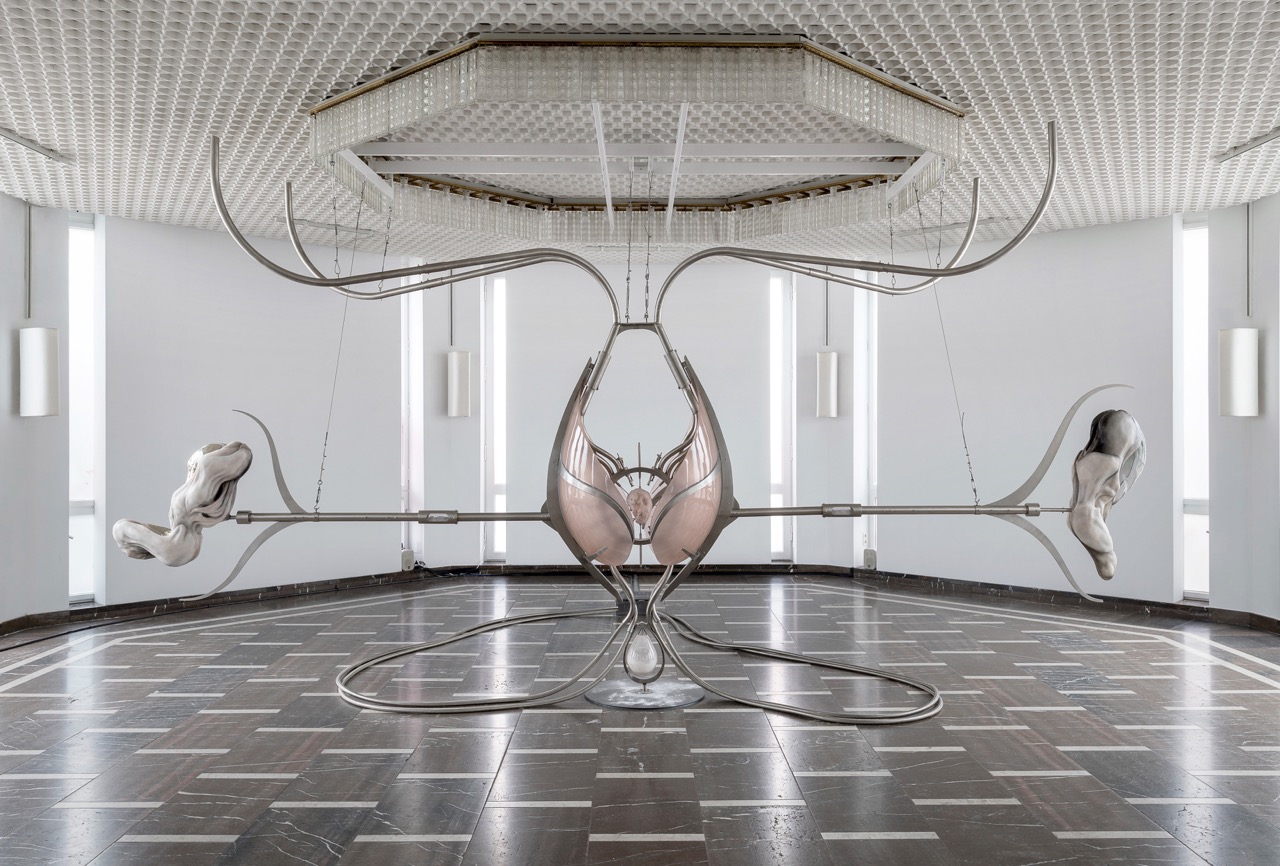
Passion of Pneumatics, 2020-2024
Metempsychosis refers to the transmigration of the soul through eternal cycles of incarnation, as it’s released from a physical body at death. IVANA BAŠIĆ’s solo exhibition Metempsychosis: The Passion of Pneumatics at Schinkel Pavillon in Berlin perfectly embodies the title, unravelling in ephemeral circles of rebirth and decay. Six years in the making, her figures defy gravity, breathe, blossom, shed, metamorphose, and give birth to themselves. As we explore her creative process and the intricate symbolism hidden in the crevices of the flesh-like wax folds and their biomechanical shields, the New York-based artist reveals an almost paranormal approach. Mirroring the qualities of her sculptures, Bašić’s artistic mind is innately earthbound and fervently alien.
Right from my first question, Bašić reflects on her traumatic childhood in the war-torn former Yugoslavia — for it’s the early close encounters with death and human fragility that continue to imbue her practice. Having grown up right next to a military airport, Bašić recalls hiding in a shelter, which was bombed around 20 times a day for over three months: “This feeling of collapse of everything you know coming closer and closer until it reaches your body is something you can’t unknow,” she states as a matter of fact. “We are contained in our bodies and are doomed to the fate of the matter, while also being so much more than the matter.” This claustrophobic duality — our dependence on physical form and a yearning to transcend it — formed Bašić’s obsession with the body long before visual art entered her life.
“It was quite a strange path,” she recounts the peculiar chain of events that led her to where she is today. Basić’s first and foremost obsession was the body and its disfigurement, which led her to pursue costume design. She quickly realised this was not where she belonged, and her professors urged her to go to the United States. “I somehow ended up in this technology program with all these people making robots and iPhone apps,” she laughs. “And the worst thing — I thought that this is what an art school was!” A year and a half later, fate intervened through a Craigslist roommate — an actual art school student — who introduced Bašić to the world of the arts. Bašić switched part of her classes to Steinhardt, where she immersed herself in anthropology, critical theory and philosophy, while experimenting with film and animation. “Eventually, I escaped into materials,” she recalls. “Because everything was related to the body, I needed my work to exist in the same dimension as me. It quickly became an addiction.”
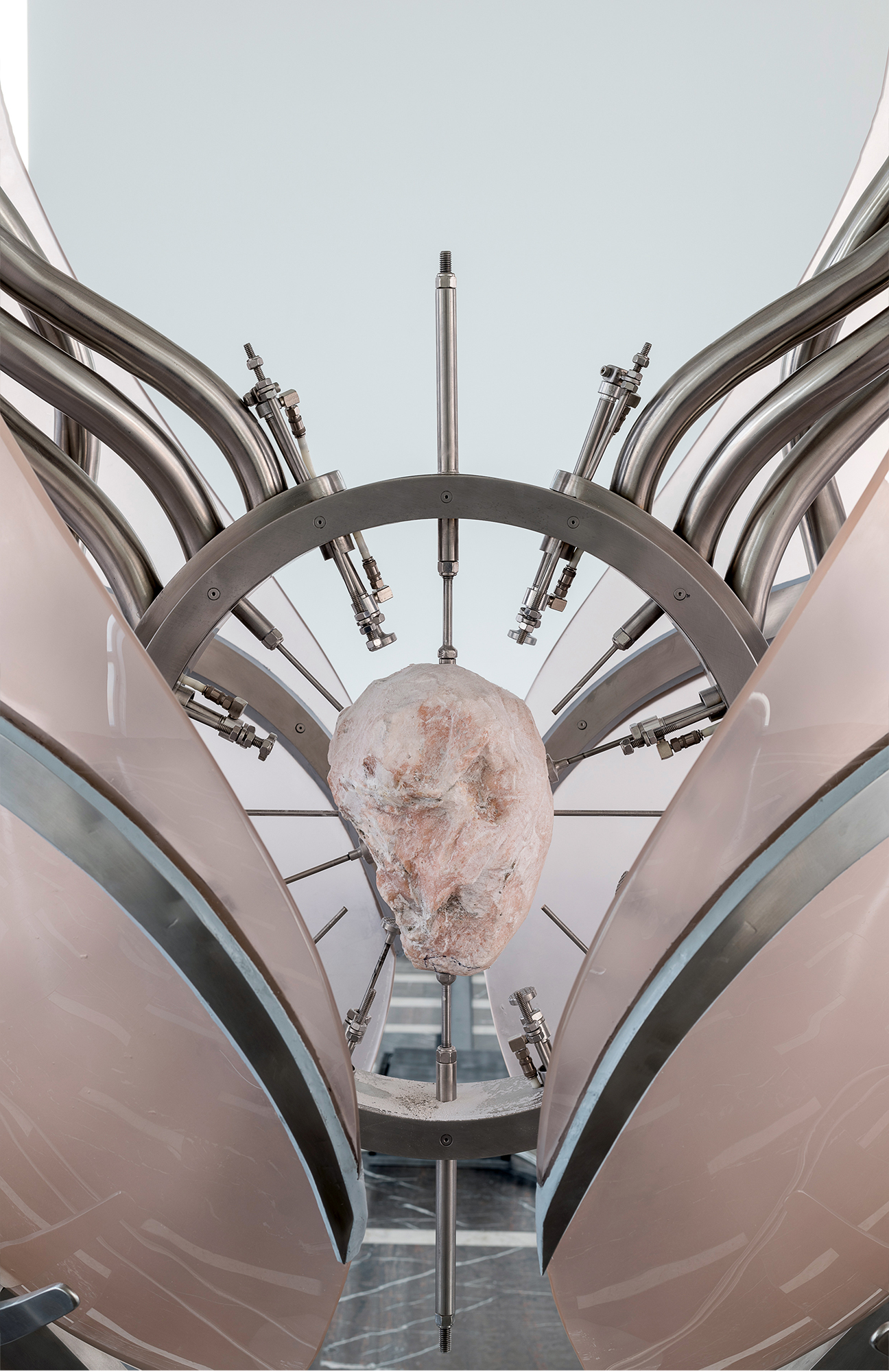
Passion of Pneumatics, 2020-2024
This addiction has developed into a perplexingly meticulous, nearly occult relationship with materials. “I started composing sort of a language of materials, where each one would symbolise a certain condition,” Bašić explains. In this metaphorical glossary, wax represents the viscerality of flesh and wet skin. “Wax comes from paraffin and paraffin comes from fossils — it’s almost like material is narrating what’s going to happen to the body,” she draws a full circle. In Bašić’s practice, there is an unspoken synergy between form and meaning, where one follows the other. “Glass and wax are indestructible when they’re liquid, and they are extremely fragile when solid. The fact that they can be remelted back into the liquid suggests that there is no finite state of those materials.” This recognition of the immortality of material underlies the quest for immortality within Bašić’s work, as her pieces are in the state of eternal transformation. “My sculptures have this yearning to go back into formlessness; they carry awareness of temporality and fragility of the form. This makes the work truthful both from outside, which is their form, and from within — the substance the forms are made of.”
The primary impetus behind Bašić’s practice is the idea of pushing materials to their absolute limit — an energetic exchange she refers to as a “constant negotiation.” Glass then becomes the expression of the force of breath, its fragility and threat of shattering echoing Bašić’s own feelings locked in her body. “It became a thing to increase the level of danger in the pieces by making them more and more fragile and hanging them in more and more impossible ways,” she continues. “It represents the fact of survival despite it all.” This is how breath, rotational forces, and pressure completed Bašić’s material language.
Suspended on the verge of futility, Bašić’s sculptures exist in eternal paradoxes. The Temptation of Being is simultaneously dissolving and birthing itself — guarded by curved steel rods, the sculpture performs an extraterrestrial ritual of inherently terrestrial process. “The soft blush palette is here to suggest tenderness and vulnerability of the figure, despite its otherworldly appearance,” Bašić speaks of her intention to evoke empathy by signalling to the viewer that her sculptures are made of the same flesh as us, and carry the same pain. Within this, the process of giving birth becomes androgynous and universal: “The birth symbolises our transformation from the ethereal realm into the material one, while the pieces themselves are an embodiment of the return back to our original condition — formlessness.”
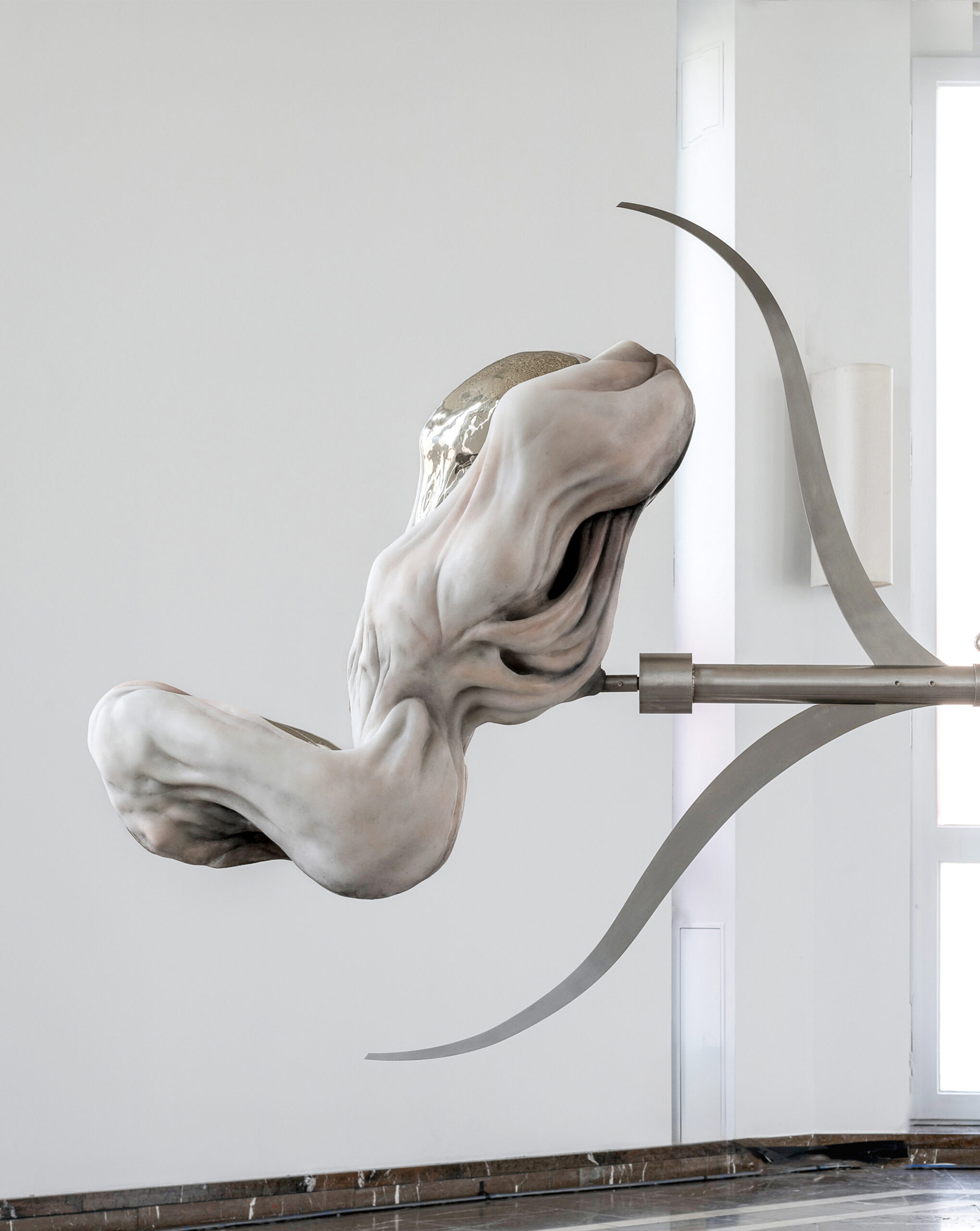
Blossoming Being #2, 2020-2024
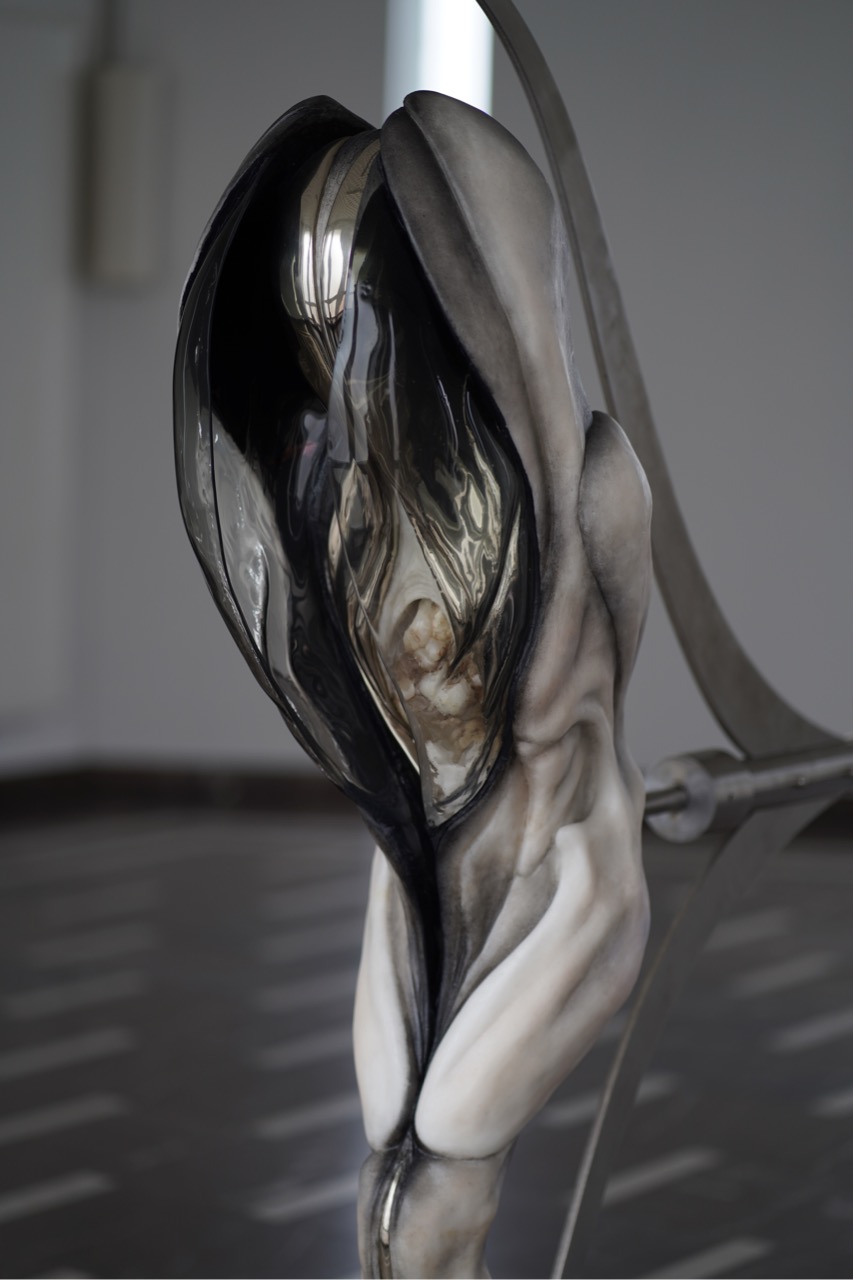
Blossoming Being #1, 2020-2024
The way Bašić’s sculptures morph — from mechanical, to cyber-futuristic, to human, to insectile — further represents this state of transformation. Looking towards a biological definition of metamorphosis, Bašić sees it as “an ultimate strategy of modification without destruction,” utilised by humanity as well. “In many cases, insects literally dissolve their bodies within the chrysalis using their stomach acid before they reconfigure into a completely new nature.” To her, this forms the very essence of how we survive and adapt: undergoing radical change as a paramount protection. Setting this organicity against sterile and “atemporal” materials like stainless steel, she sends her materials into another dialectic collision — the mechanical “will shelter the body and overpower it.” The chimeric piece I had seen the centuries, and the vast dry lands; I had reached the nothing and the nothing was living and moist is being consumed by its own steel legs, bowing down as its soft flesh is exposed. Resembling a praying mantis — an oracle of the afterlife in Greek and Egyptian folklore — the sculpture finds its timelessness through shedding. Next to it, as if the insectile creature had just laid them, rest two glass eggs. Mucous and exposed, Hypostasis carries the artist’s breath, anticipating “the brutality of life forces” that will act upon it.
This metaphor of tension and symbiosis — of genesis and decomposition, tenderness and violence — culminates in the exhibition’s altarpiece, Metabole. “I was looking at sacred geometry and how the sublime is represented, and kept on stumbling upon this image,” Bašić says about the archetype of the Immaculate Heart of Mary. In Metabole, the archaic heart turns into a pink alabaster stone, and the radial rays emanating out of it are reimagined in steel-clad mechanical rods. These “pneumatic hammers” rhythmically puncture the stone until it turns to dust. Programmed to the cadence of the artist’s breath, the structure reveals a sort of umbilical connection between Bašić and her work. “Breathing is both life-giving and is also the thing that slowly dissolves us,” Bašić muses. “I wanted to amplify the awareness that the same destruction is happening within you as you’re looking at the piece.” But this destruction is not a negative process — in fact, Bašić finds infinity in the dust that’s left after demolition. “It’s the idea of reducing something to the point where it’s irreducible — and that which is irreducible is eternal. Since everything can be reduced to dust, that makes dust the composite of everything that exists,” she concludes. “If you go deep enough into any substance, you will reach the point of the unknowable, and that point inserts endless potential into our understanding of what “human” is — and can be. This mystery of our own existence is contained within the very substance we are made of.”
Metabole is a seven-meter-wide work of art and contains over 400 individual pieces, including Blossoming Beings on either side of the centrepiece. With all of its 55 kilograms hanging precariously from the ceiling, Bašić rightfully describes its creation as “the biggest challenge of [her] mental and physical ability.” As incredible as this achievement is, she is still reluctant to take full credit for it. “I started to work with the stone just by trying to understand it,” Bašić reflects emphatically. “I sat with this one stone for a year before I even dared to work on it. I wanted it to tell me what it wants to become.” In her process, it’s as if she gives creative control to her materials. “It’s really strange because sometimes there will be five or six entities that will inhabit the initial clay casts, but they won’t be the ones I’m supposed to carry out. And then, one day, the right one will come and it will just slip out of my hands — once I see it, it’s so wild.” Acting as a portal between the human and the supernatural, Bašić speaks of her materials with so much admiration and passion, like a person in love. In this “negotiation”, she becomes a whisperer of materials and non-materials, conversing and mediating between glass, steel, wax, gravity, and her own breath.
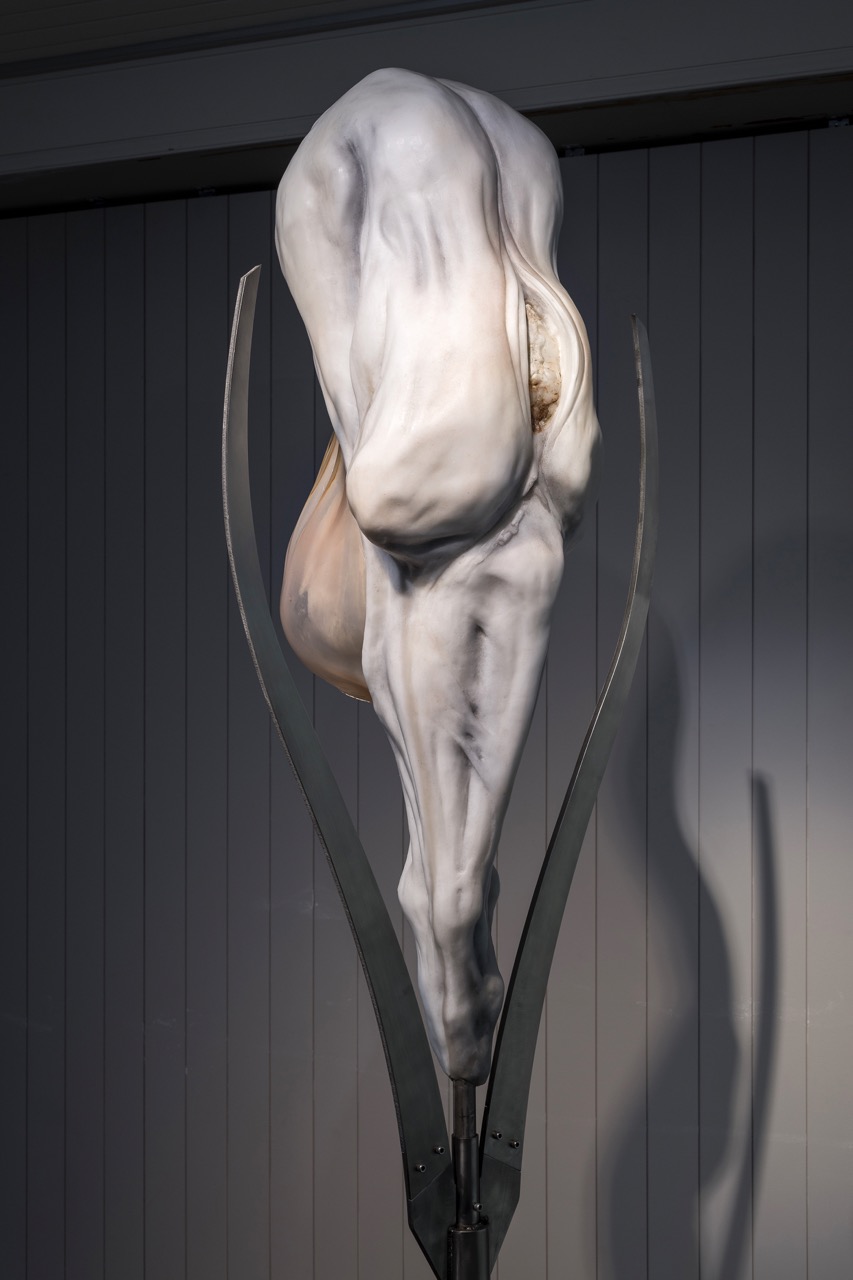
The Temptation of Being, 2024
Broadly reflecting on her practice, Bašić has also found healing — through her own self and the “entities” that occasionally come to hang out at her studio. “Pain is always an invitation to grow,” she contemplates. “It becomes an obsession to take what happened to one and turn it into light.” A lot of Bašić’s art has been a channel that allowed her to process her own trauma. Moving from heavily bruised and wounded bodies to “bodies that are blossoming” feels like a testament to remarkable reconciliation. “The bodies are speaking of the same things, but now they are shedding their skin in exchange for the celestial nature which is in our core.”
And Bašić’s sculptures become a spine-chilling manifestation of that celestial nature. There is liberation in deformity: they don’t have to conform to the normalcy of our bodies. They are in constant flux and are never grounded (literally — they are always suspended). They float in a dimension free from Newtonian physics. Art becomes emancipation, and we are invited to escape our own mortality, teasing the constraints of our imagination, physical form, weight, gravity. In front of the impossibility of Bašić’s work, we can live forever — in the end, just like the heart of the Metabole, we all turn to ether.
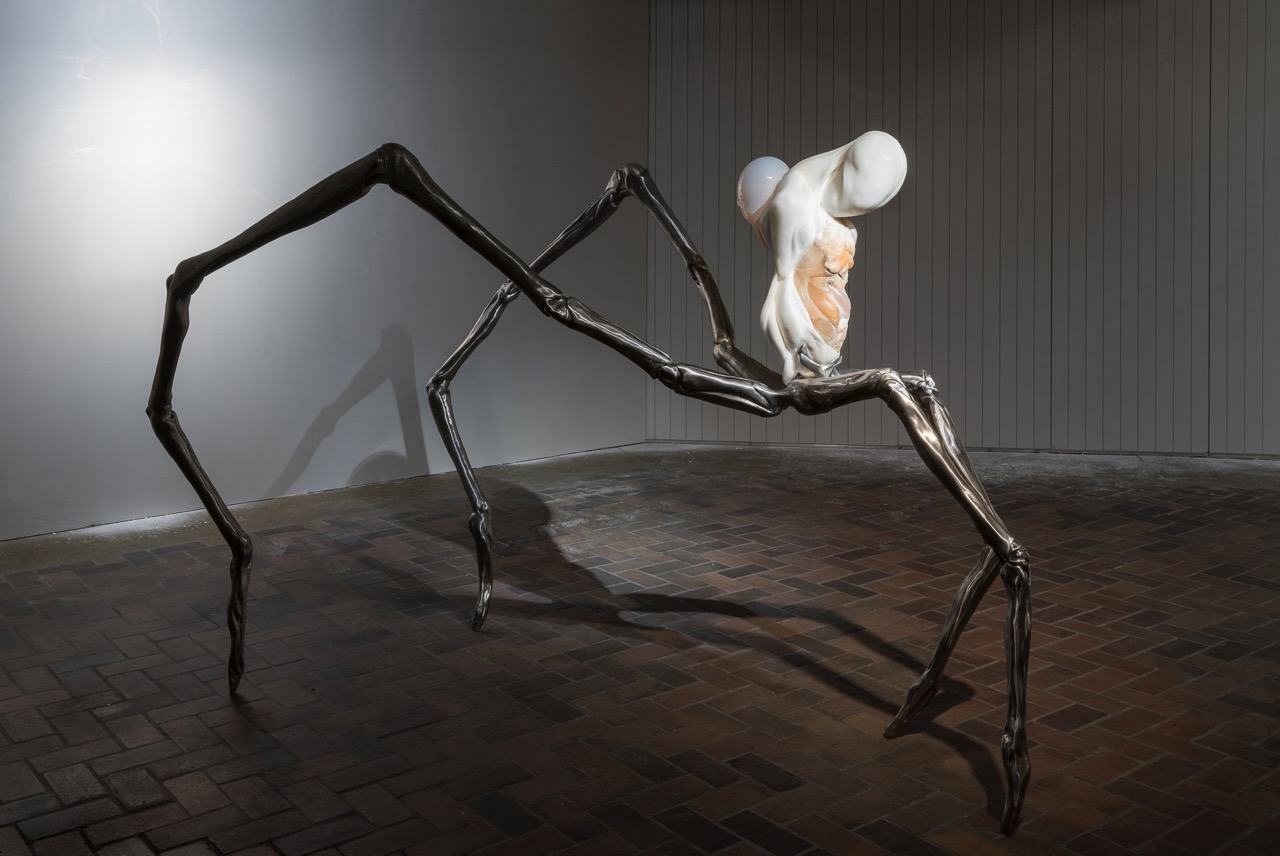
I had seen the centuries, and the vast dry lands; I had reached the nothing and the nothing was living and moist, 2018- 2024
Words by Evita Shrestha
Photography by Stefan Korte, courtesy of Schinkel Pavillon
Notifications